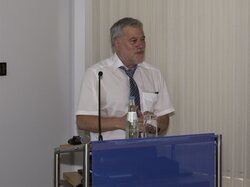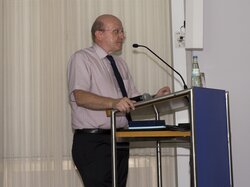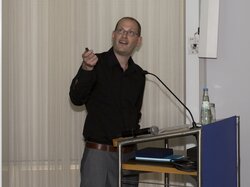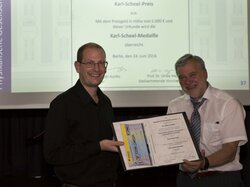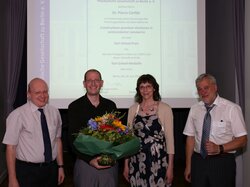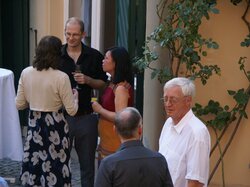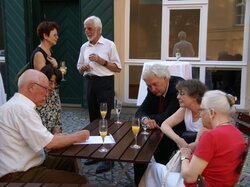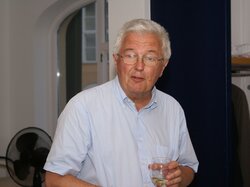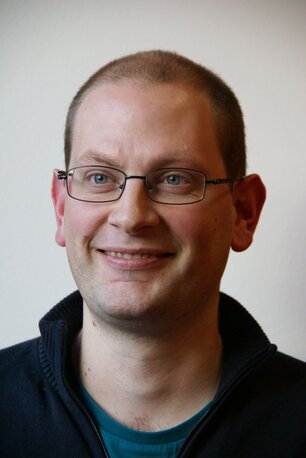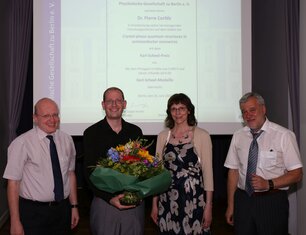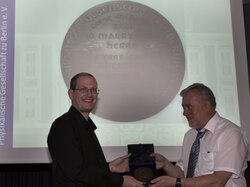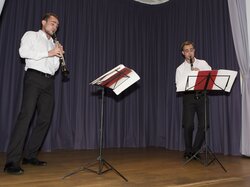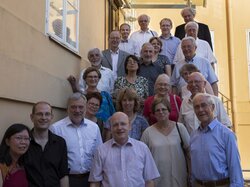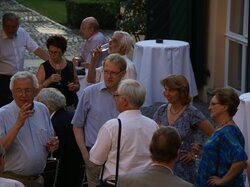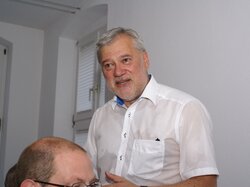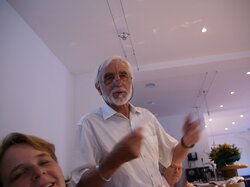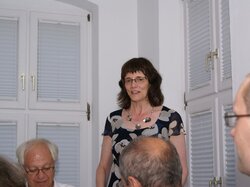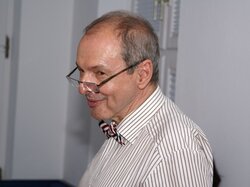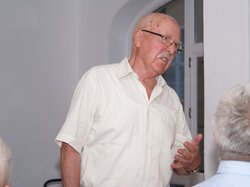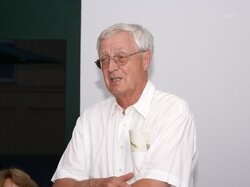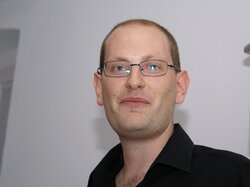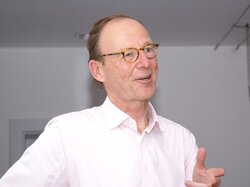Karl-Scheel-Sitzung und Preis 2016
Zeit
Sprecher:innen
- Dr. Pierre Corfdir
Dateien
Crystal-phase quantum structures in semiconductor nanowires
Im Rahmen der Karl-Scheel-Sitzung 2016 wurde
Dr. Pierre Corfdir,
Paul-Drude-Institut für Festkörperelektronik,
Leibniz-Institut im Forschungsverbund Berlin e. V.,,
der Karl-Scheel-Preis 2016 verliehen.
Der Preisträger hielt einen Vortrag über seine Forschungsergebnisse.
Im Anschluss erfolgte die Verleihung des Karl-Scheel-Preises an den Vortragenden.
The realization of low-dimensional semiconductor heterostructures has relied on the ability to combine semiconductor compounds with different bandgaps and with dimensions down to the nanometer scale. Despite huge progress in the heteroepitaxy of III-V semiconductors, local alloy disorder and inevitable fluctuations in the dimensions of the nanostructures are detrimental for their optical properties. Strain relaxation that results from the combination of materials with dissimilar lattice constants leads also to the generation of nonradiative defects, which impede optoelectronic applications as well as fundamental studies on the optical properties of confined excitons.
In this context, crystal-phase quantum structures, where the carrier confinement is achieved by alternating the crystal structure of a semiconductor and not the composition, are promising for the realization of quantum structures with superior optical properties. Crystal-phase quantum structures are indeed free of strain and alloy disorder, and their interfaces are flat to the monolayer. Whereas crystal-phase quantum structures have been encountered in the bulk only occasionally, recent developments of the growth processes have opened the possibility of tuning the crystal phase when growing semiconductors in the form of nanowires.
In this talk, I will describe the optical properties of crystal-phase quantum structures that form by alternating zincblende and wurtzite lattice structures in group-III-As and group-III-N nanowires. Based on photoluminescence experiments, the dimensionality of the exciton and the shape of the wavefunction of the exciton in these structures will be extracted. Charge carrier relaxation, localization, and recombination mechanisms in crystal-phase quantum structures will also be described. Finally, the potential of crystal-phase quantum structures for quantum optics applications and quantum interferences studies will be briefly discussed.
Bilder
